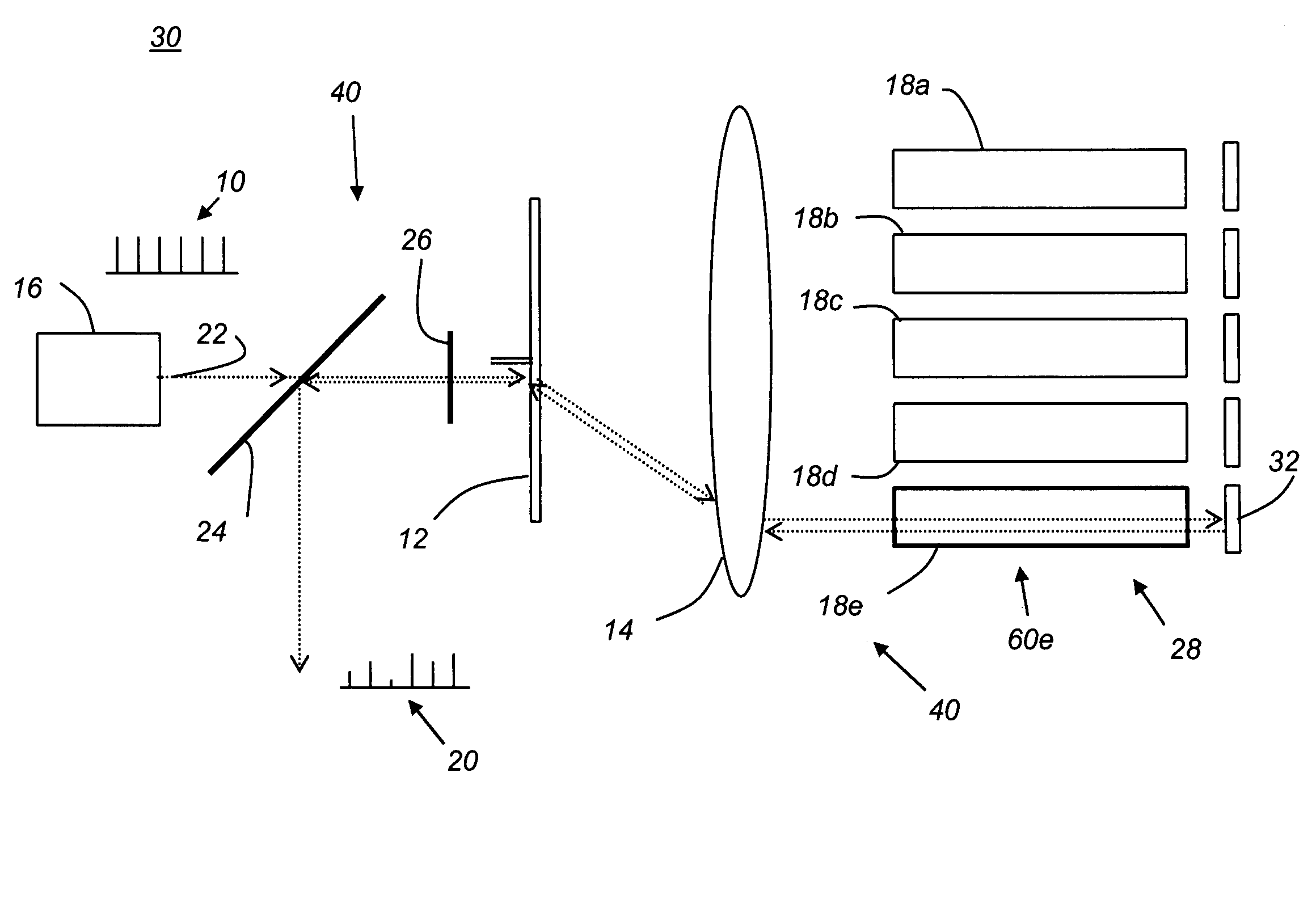Optical power modulation at high frequency
a technology pulsed light source, which is applied in the field of optical power modulation for high frequency pulsed light source, can solve the problems of spectral range, defy conventional solutions, and exceed the range of modulator devices, and achieve the effect of high frequency pulsed laser modulation
- Summary
- Abstract
- Description
- Claims
- Application Information
AI Technical Summary
Benefits of technology
Problems solved by technology
Method used
Image
Examples
Embodiment Construction
[0032]The timing chart of FIG. 1 shows the overall goal of the present invention: namely, to provide a modulated, high frequency pulsed radiation beam 20 that is generated from a pulsed radiation beam 10 having a relatively constant power output. The apparatus and method of the present invention is adaptable to a range of periods t1, particularly including periods t1 that are shorter than the response times of individual modulating components themselves. In embodiments described subsequently, for example, an array of modulator components, where each individual component has a maximum response time of only about 1 KHz, can be used to modulate a pulsed laser beam at a pulsed repetition frequency of 5 KHz (having a period t1 of 0.2 msec). As FIG. 1 shows, each individual pulse of a high-frequency modulated pulsed radiation beam 20 can be modulated, allowing a highly precise delivery of output power, pulse by pulse. Schematic diagrams in subsequent figures show the path of pulsed radiat...
PUM
 Login to View More
Login to View More Abstract
Description
Claims
Application Information
 Login to View More
Login to View More - R&D
- Intellectual Property
- Life Sciences
- Materials
- Tech Scout
- Unparalleled Data Quality
- Higher Quality Content
- 60% Fewer Hallucinations
Browse by: Latest US Patents, China's latest patents, Technical Efficacy Thesaurus, Application Domain, Technology Topic, Popular Technical Reports.
© 2025 PatSnap. All rights reserved.Legal|Privacy policy|Modern Slavery Act Transparency Statement|Sitemap|About US| Contact US: help@patsnap.com



